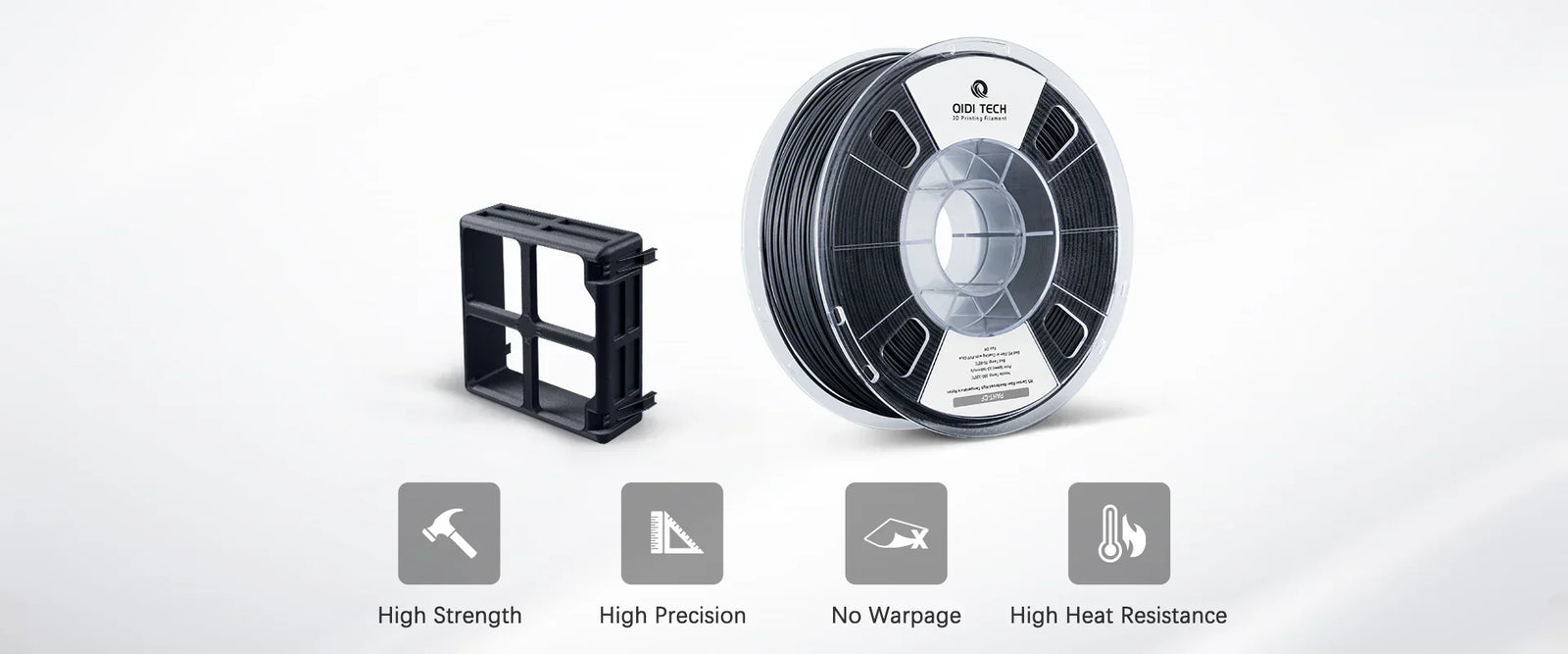How to Select the Right Industrial-Grade Composite Materials for Your 3D Projects


If your 3D-printed parts need to be stronger or more durable than what standard plastics can offer, it's time to look at industrial-grade composites. Using these advanced materials allows you to create functional parts that are strong, lightweight, and built to last. For anyone working in engineering or product design, picking the right composite is a critical step. The material you choose affects how well the part performs, how long it lasts, and how much it costs. This guide offers a straightforward process to help you choose the best material for your project's specific needs.
What Are Industrial 3D Printing Composites?
Industrial composites for 3D printing are made of two main parts: a base plastic and a strengthening fiber. Understanding what each part does is key to selecting the right one.
Base Polymer and Reinforcement Fiber
The base polymer, or matrix, is the main plastic that gives the part its basic shape and properties like chemical or heat resistance. Common choices include everyday engineering plastics like Nylon (PA) or PETG, as well as high-performance polymers like PEEK, which can handle extreme temperatures and harsh chemicals.

The reinforcement fiber is what gives the composite its high strength. These fibers are mixed into the base polymer to dramatically improve mechanical properties like stiffness and impact resistance. The three most common fibers are carbon fiber, fiberglass, and Kevlar®.
Chopped Fibers vs. Continuous Fibers
How the fiber is added to the plastic makes a huge difference in the final part's performance.
Chopped fibers are short strands of fiber mixed into the plastic filament before printing. As the part is printed, these fibers end up scattered throughout the material, making the whole part stronger and stiffer than the base plastic alone. Many standard 3D printers can use these filaments, as long as they have a hardened nozzle that won't wear down from the abrasive material.
Continuous fibers, on the other hand, are single, unbroken strands that are laid down inside the part during the printing process by a specialized printer with a second nozzle. This process lets you place strength exactly where it's needed, creating parts that can be as strong as machined aluminum but much lighter. This is what makes replacing metal parts with 3D printed composites possible.
How to Select a Material for Your 3D Projects
The right material isn't always the strongest—it's the one that meets your project's needs in a practical and cost-effective way. Following a clear process helps you avoid choosing a material that is over-engineered and unnecessarily expensive.
Step 1: Define Requirements
First, define what the part needs to do and the conditions it will face. This involves evaluating its mechanical, thermal, and chemical requirements.
- Mechanical Needs: This is often the primary reason for using a composite. Consider the forces the part must handle. Does it need high strength and stiffness to resist bending, like a support bracket or manufacturing jig? Or does it need toughness and impact resistance to survive drops or impacts, which is common for robotic grippers? For moving parts, fatigue and wear resistance are crucial.
- Thermal Needs: Operating temperature is a critical factor. A material’s Heat Deflection Temperature (HDT) indicates when it will begin to soften under load. This is vital for parts used near motors, in vehicles, or in hot factory environments.
- Chemical and Environmental Needs: Consider the part’s environment. Will it be exposed to oils, coolants, or other chemicals? Outdoor parts require UV stability to prevent them from becoming brittle. Precision tools need low moisture absorption to maintain dimensional accuracy in humid conditions.
Step 2: Prioritize Your Needs
Once you have a list of requirements, decide which are "must-haves" and which are "nice-to-haves." This is important because you will almost always have to balance trade-offs. For example, carbon fiber offers high stiffness but is more brittle than Kevlar®. High-temperature plastics like PEEK perform well but cost significantly more than Nylon. Ranking your needs helps you focus on what's most important and find a balanced, affordable solution.
A Comparison of Reinforcement Fibers
With your application's requirements clearly defined and prioritized, you can now evaluate which reinforcement fiber is the right fit. Each one offers a different set of benefits.
Carbon Fiber
Carbon fiber is the best material for things that need to be strong and stiff while also being light. Because of this, it is perfect for making aerospace and robotics parts lighter or for making industrial tools that can replace parts that are heavier and made of aluminum. But because it's very stiff, it's also very fragile, so it's not good for situations where it might get hit hard. It costs the most and is the most expensive way to strengthen.
Fiberglass
Fiberglass is a strong, long-lasting material that can be used for many things. It is also very cheap. Because it doesn't conduct electricity, it's often used for working prototypes, electronics housings, and general-purpose jigs and fixtures that need to be stronger than plastic alone. Carbon fiber is stronger, but it is lighter and stiffer than carbon fiber.

Kevlar® (Aramid Fiber)
Kevlar®, which is made of aramid fibers, is the best material for longevity because it is very tough and doesn't wear down easily. It works great for parts that need to last a long time and not get damaged, like soft jaws for holding delicate parts or assembly pieces that get rough use. It can be hard to sand or make, and its compressive strength is not as high as that of fiberglass or carbon fiber.
Beyond Material Selection: Practical Factors for Success
Choosing the right material is only one part of the equation. Your printer's capabilities, your part's design, and your budget are just as important for success.
3D Printer Requirements
Not all 3D printers can handle these materials. As mentioned earlier, the chopped fibers are abrasive and require a hardened steel nozzle to avoid damage. High-temperature plastics like PEEK need a printer with a heated build chamber to print successfully. And if you want the superior strength of the continuous fibers we discussed, you must use a printer specifically equipped with that technology.
Design for Additive Manufacturing (DfAM)
To get the most out of a composite material, you have to design the part specifically for it. You can't just print a design meant for metal and expect it to work well. To meet the strength requirements you identified earlier, the design must be optimized. With continuous fiber, this means orienting the fibers along the paths where stress is highest. You can also use topology optimization software to create designs that use material only where it's needed, maximizing the strength-to-weight ratio.
Budget and Production Volume
Finally, consider the total cost. This includes not just the price of the material spool, but also the print time and any wear and tear on the printer. Always evaluate if a less expensive composite can meet all of your "must-have" requirements before deciding on a more costly, higher-performance option.
Move Forward with Your 3D Projects and a Clear Plan!
The path to a great composite part is a process of deliberate steps. It starts with a clear understanding of what your project requires. By defining your needs first, you can effectively compare the distinct benefits of materials like carbon fiber, fiberglass, and Kevlar®. When you also account for your printer, design strategy, and budget, you turn a guess into a sound engineering decision. This practical approach ensures that the part you create is reliable, effective, and makes sense for your project.


 プラス4
プラス4



 テック
テック 
